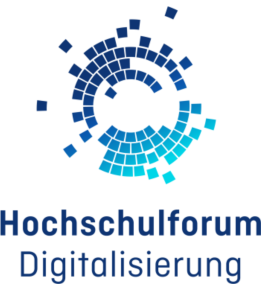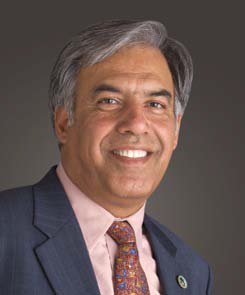Higher Education for the Digital Society
Higher Education for the Digital Society
25.11.14Zum Anlass der gemeinsamen Veranstaltung The End of the University as we know it: Higher Education for the Digital Society der Leuphana Universität Lüneburg, der Botschaft der Vereinigten Staaten von Amerika, des Bard College Berlin und des Stifterverbandes für die Deutsche Wissenschaft hatten wir die große Freude, mit Mohammad Qayoumi einen prominenten internationalen Akteur für einen Beitrag für unseren Blog zu gewinnen:
Digital revolution has fundamentally shifted the competitive landscape practically for every sector of the economy. A decade ago, Frances Cairncross, of The Economist, referred to “the death of distance”—a phenomenon whereby in many circumstances parties to transactions no longer need to be physically close to one another. Indeed, the network of instantaneous communications has redefined work, space, time and now learning at a global level.
Digitization has been rewriting the rules of competition, where legacy enterprises are sometimes surprised and stunned by the phenomenal pace of change that is not intuitively obvious. This concept was articulated by Albert A. Barttlet when he said: “The greatest shortcoming of the human race is our inability to understand the exponential function.”
The pace of technological advances in the digital ecosystem could be best explained by Ray Kurzweil’s Law of Accelerating Returns, which states “as order exponentially increases, the time exponentially speeds up, i.e. the time interval between salient events grows shorter as time passes.” Based on this phenomenon Kurzweil predicts that advances in the 21st century will be equivalent to 20,000 years of prior years.
Last March marked the 25th anniversary of the development of the World Wide Web. This connectivity has moved the world from a scarcity of knowledge to almost unimaginable abundance. That is why there is a stronger emphasis on learning than just acquisition of content. Learning is much more than accessing content. The role of learning is best explained by Diana Oblinger, of EDUCAUSE, by stating that: “In the 21st century, learning is a complex blend of skills, competencies, and the will to continue learning throughout life. These skills and competencies include the ability to think critically and solve complex problems, work collaboratively, communicate effectively, and pursue self-directed learning or metacognition.”
Therefore, digitization is reshaping global flow and the dissemination of knowledge in a significant way.
To address these challenges we are proposing the creation of an open learning ecosystem that:
Requires innovative methods of teaching and learning
Accommodates a very broad mixture of learning providers
Removes the old division between formal education and informal learning
Enables learners to have a private, permanent, secure, electronic portfolio
To accomplish the above we propose the following key steps:
- Implement a new model curriculum to standardize 25 to 40 of the most popular lower-division courses in a range of disciplines. Partnering with industry and organizations, these redesigned courses should be free and available in the cloud to anyone, anywhere.
- Encourage the development of new ways to assess student learning to dramatically reduce the need for remediation and repetition of courses. Entrepreneurs and academics must partner to develop these tools.
- Foster new collaborations between colleges and universities, businesses and the community to create innovative programs that blend learning with real-world experience. Lead the way in adopting the best new approaches for using technology and collaboration to transform teaching and learning for 21st-century needs.
- Expand problem-based learning in higher education by encouraging the interdisciplinary and highly engaged learning that advances these skills.
- Enhance collaboration opportunities between universities and industry to develop internships and other applied learning experiences that are an essential component of undergraduate education.
- Expand a more widespread adoption of communication technologies to facilitate the integration of classroom and workplace, to track and assess learning outcomes across the two venues, and to enable students to record, reflect on and share their learning experiences and outcomes.
I am very interested in discussing these and other ideas with my colleagues in Berlin today on November 25th.

